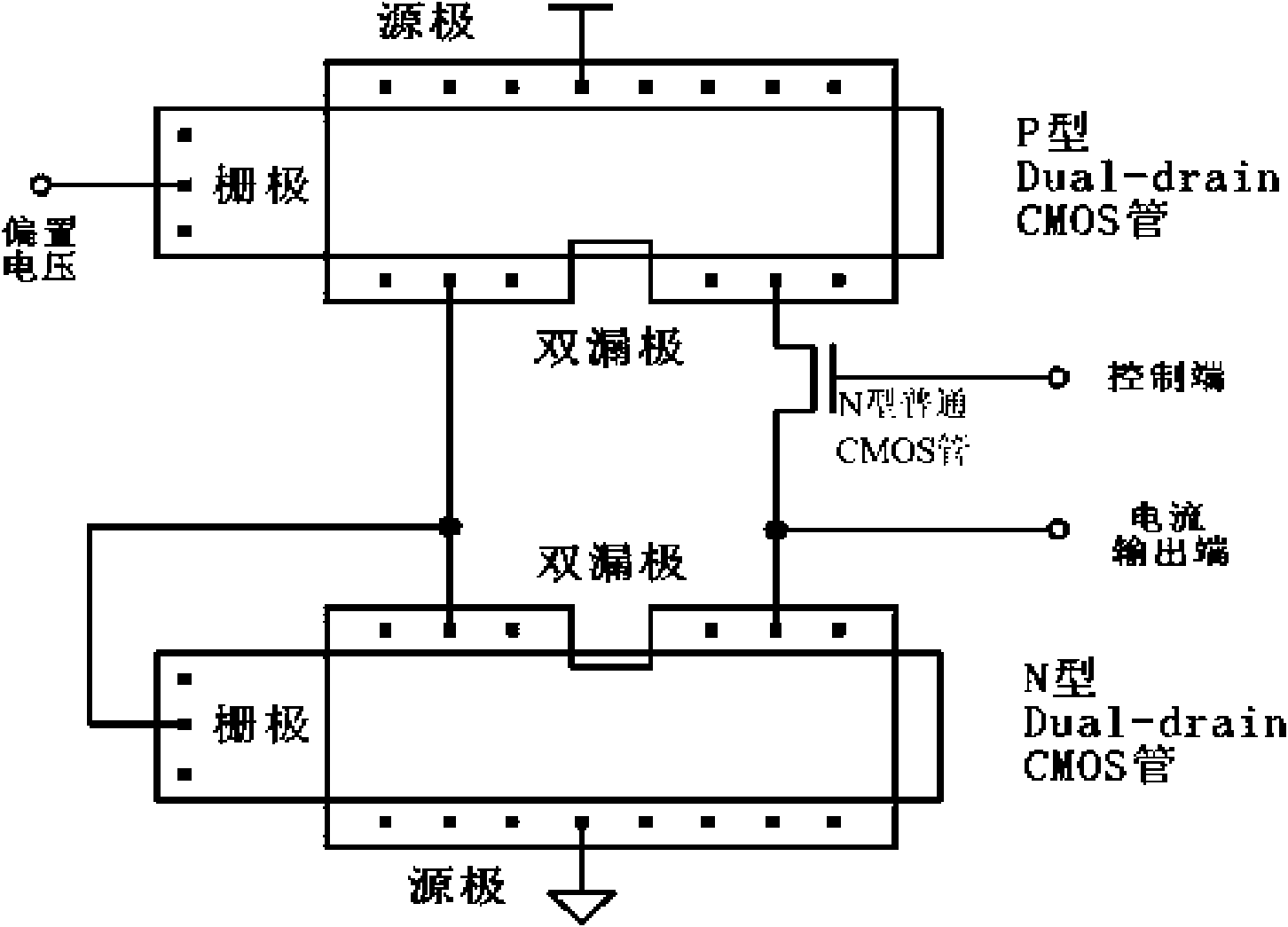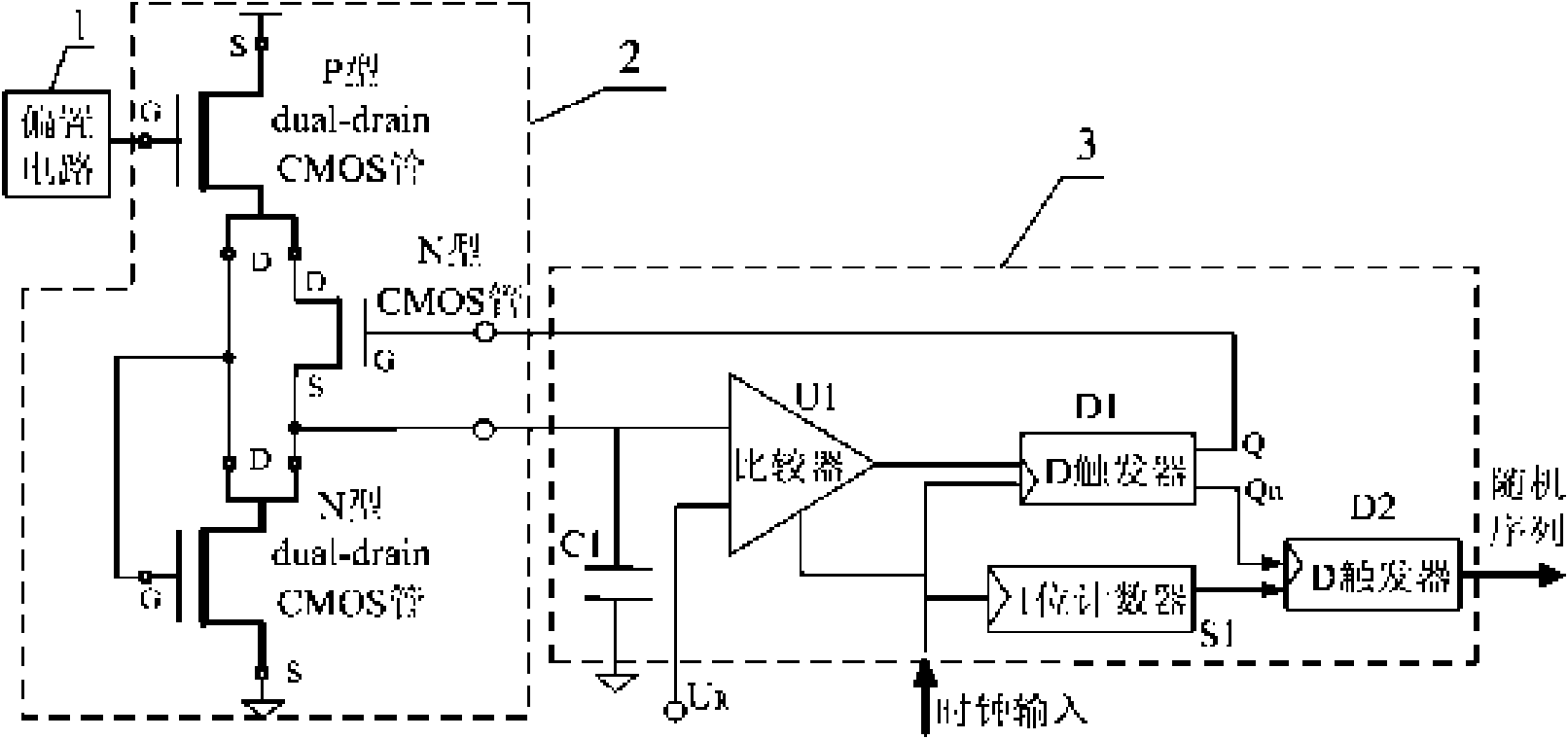CMOS (Complementary Metal Oxide Semiconductor) random number generator
A technology of random number generator and flip-flop, applied in random number generator and other directions, can solve the problems of insufficient noise, high power consumption, multi-energy, etc., to reduce power consumption, low power consumption, and solve the problem of low power consumption. Effect
- Summary
- Abstract
- Description
- Claims
- Application Information
AI Technical Summary
Problems solved by technology
Method used
Image
Examples
Embodiment Construction
[0024] The principles and features of the present invention are described below in conjunction with the accompanying drawings, and the examples given are only used to explain the present invention, and are not intended to limit the scope of the present invention.
[0025] figure 1 A block diagram of a CMOS (Complementary Metal Oxide Semiconductor) random number generator provided by the present invention. like figure 1 As shown, the CMOS random number generator includes three parts: a bias circuit 1, a double-drain CMOS tube noise current source 2, and a control circuit 3. Among them, the bias circuit 1 is used to provide a DC operating point for the double-drain CMOS tube noise current source 2; the double-drain CMOS tube noise current source 2 uses a double-drain CMOS (complementary metal oxide layer semiconductor) tube to generate a noise current signal and output; the control circuit 3 is used to convert the noise current signal generated by the double-drain CMOS tube no...
PUM
 Login to View More
Login to View More Abstract
Description
Claims
Application Information
 Login to View More
Login to View More - R&D
- Intellectual Property
- Life Sciences
- Materials
- Tech Scout
- Unparalleled Data Quality
- Higher Quality Content
- 60% Fewer Hallucinations
Browse by: Latest US Patents, China's latest patents, Technical Efficacy Thesaurus, Application Domain, Technology Topic, Popular Technical Reports.
© 2025 PatSnap. All rights reserved.Legal|Privacy policy|Modern Slavery Act Transparency Statement|Sitemap|About US| Contact US: help@patsnap.com



